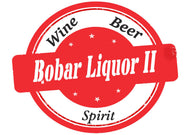The Difference Between Bourbon and Whiskey
Whiskey, which is also spelled whisky, is made in a broad range of styles in many countries, including the United States, Scotland, Ireland, Canada. and Japan.
Depending on where the spirit is produced it has a variety of different age statements and can be finished in a number of different types of woods. The most common tend to be a variety of oaks, as well as sherry and Port barrels, along with other types of woods.
Bourbon, on the other hand, is “a subset of the global whisk(e)y category: which includes Scotch, Irish, Rye, and Japanese,” iterations, according to Allen Katz, Director of Mixology and Spirits Education at Southern Glazer’s Wine & Spirits, New York.
How Whiskey is Produced
Wherever this ancient drink is made it follows a fairly similar recipe. It is generally made from water, barley, and yeast and goes through five production stages, according to Whiskyforeveryone. Stage one is malting, during which the starch is converted to sugar; then mashing, when warm water is added to extract sugars; followed by fermentation, during which the wort—the liquid extracted from the mashing process during the brewing of whiskey—is cooled passed into large tanks called washbacks; next distillation, when the spirit is distilled in different cooper stills; and lastly maturation, when the spirit is put into oak casks and stored.
All types of wood are porous, so over time, these barrels will take in air from the surrounding environment in which they are stored. This will also give the whisky some unique characteristics, particularly if it is stored near bodies of water, according to Whiskyforeveryone. A small amount of spirit is lost through natural evaporation every year, which also happens in regions such as Cognac in France.
“Bourbon, like other whiskies, can come in a range of blends, ages, small batches and single barrels – and prices. Bourbon is simply one type of whisk(e)y,” notes Allen Katz, director of mixology and spirits education at Southern Glazer’s Wine & Spirits, New York.
The Inside Story on Bourbon
Bourbon is an American classic, the majority of which is produced in its namesake Bourbon County, Kentucky. Bourbons are distilled from a fermented mash of grain, yeast, and water. The “mash bill” must have a minimum of 51 percent corn. This spirit must be aged in brand new white oak barrels that have been charred on the inside.
Rye is the second best-known grain used in Bourbon; it tends to add a dry, spicy, peppery flavor to the character of the whiskey. Wheat is also used and tends to add a smooth, nutty character to the spirit.
“Bourbon, like other whiskies, can come in a range of blends, ages, small batches and single barrels – and prices. Bourbon is simply one type of whisk(e)y,” notes Katz. Bourbon, according to Bourbon County, is also distinct from a whiskey because it leaves the still at no higher than 80 percent alcohol by volume (ABV); it is bottled at no less than 40 percent ABV; it is flavored by nothing other than water.
Katz adds that there are “lots of good and great whisk(e)ys and even more mediocre whisk(e)ys! At the end of the day, while there are some empirical attributes that can be quantified, the quality of bourbon and other whiskies is sublimely subjective.”
Contributed by
Proof Content Team

